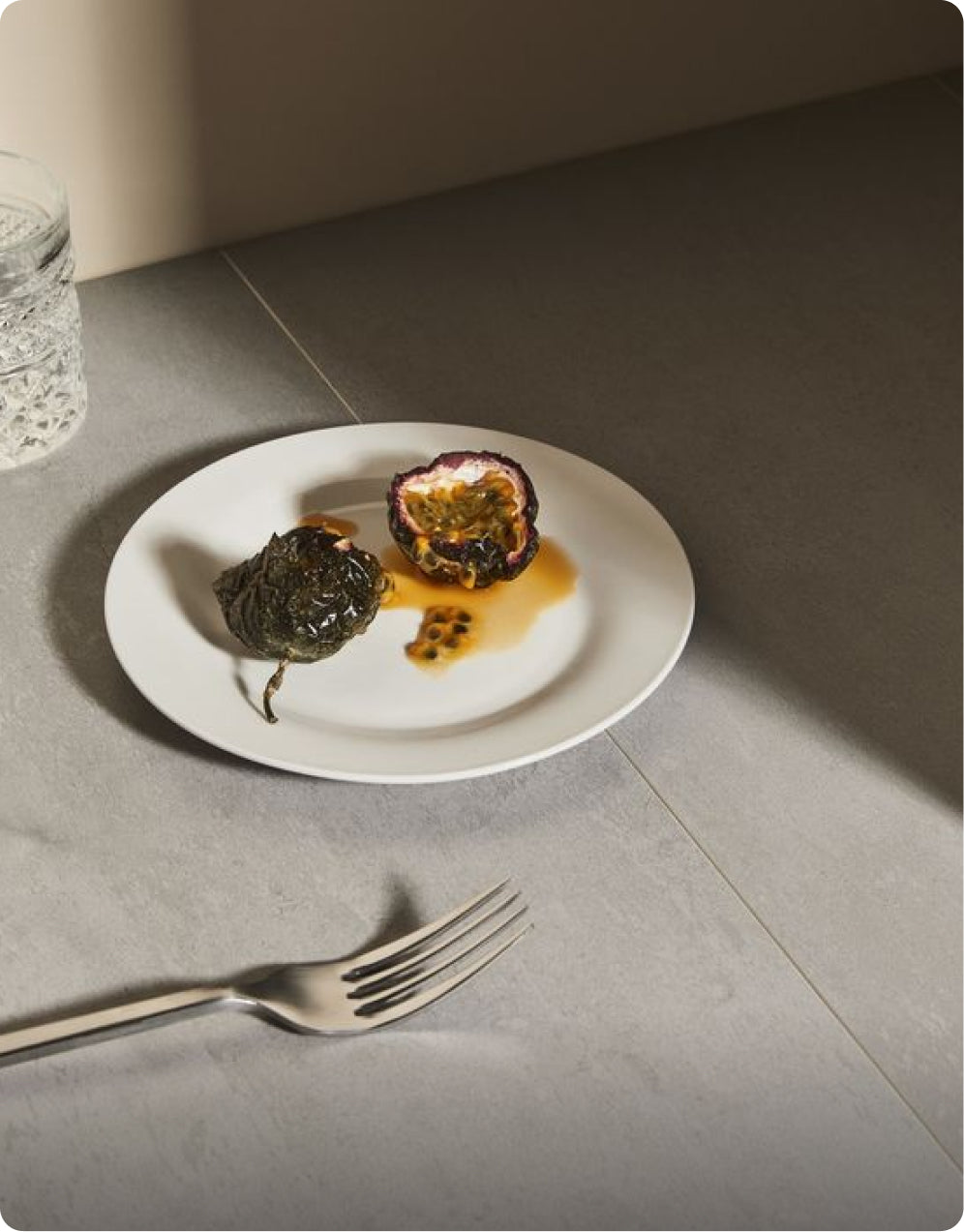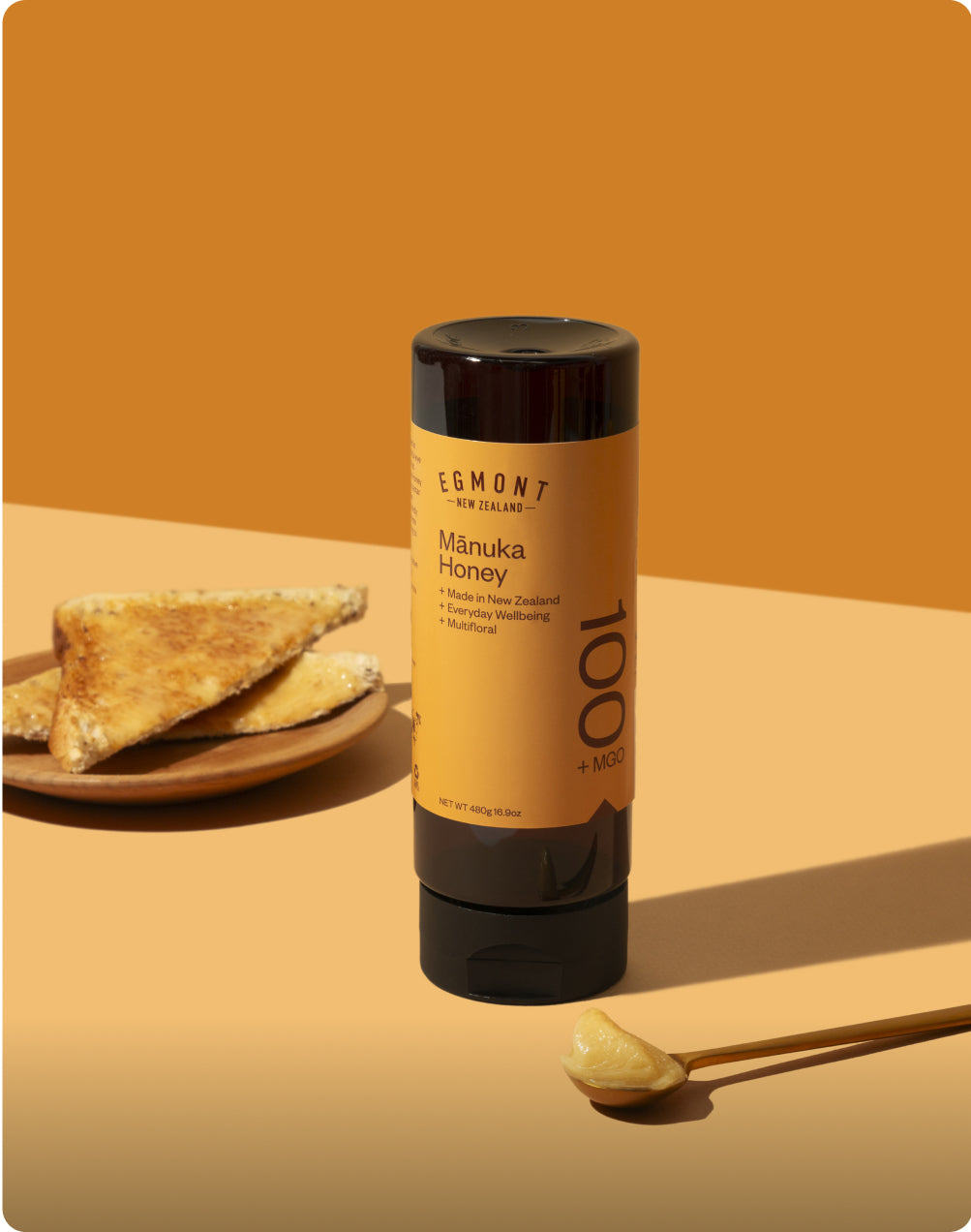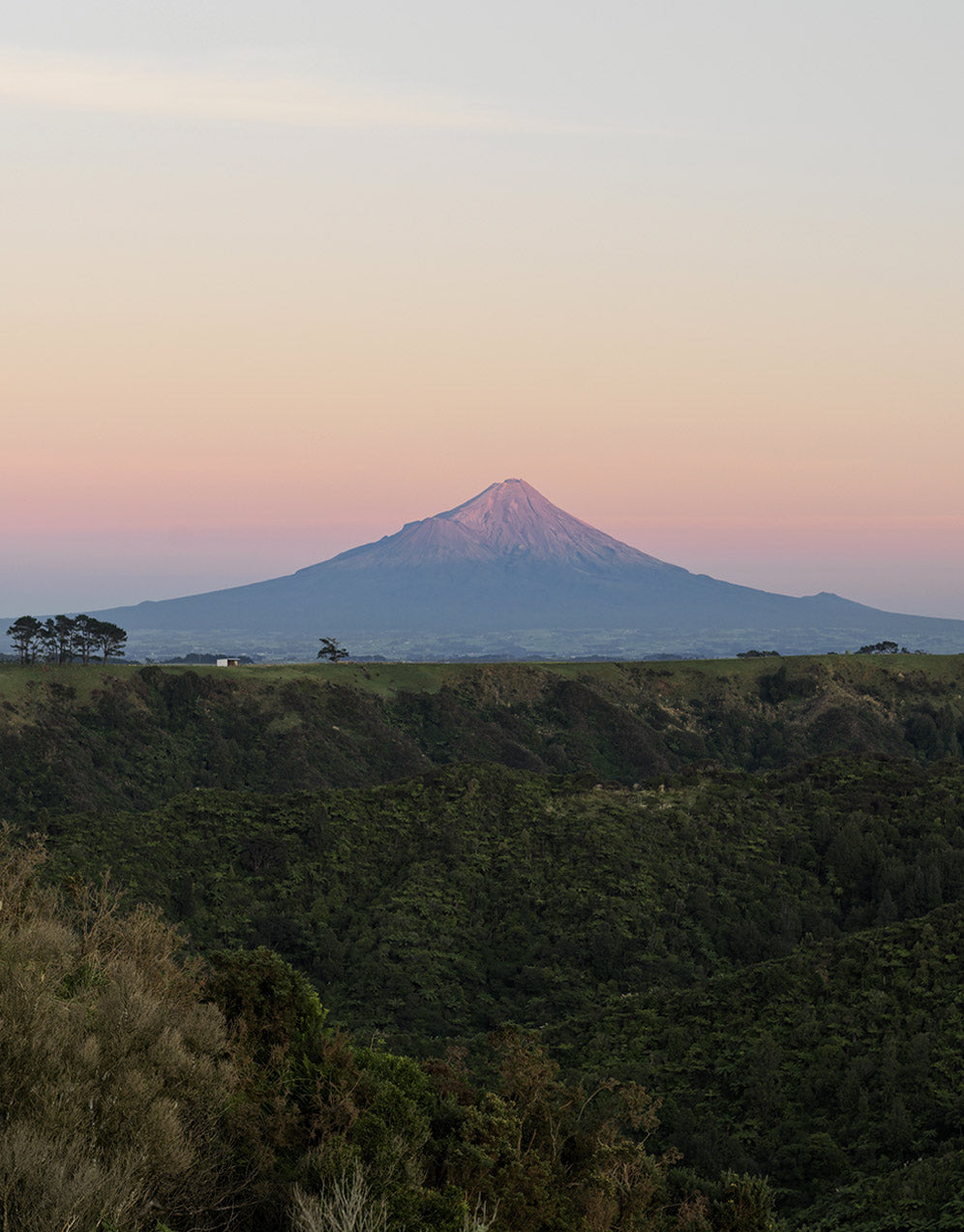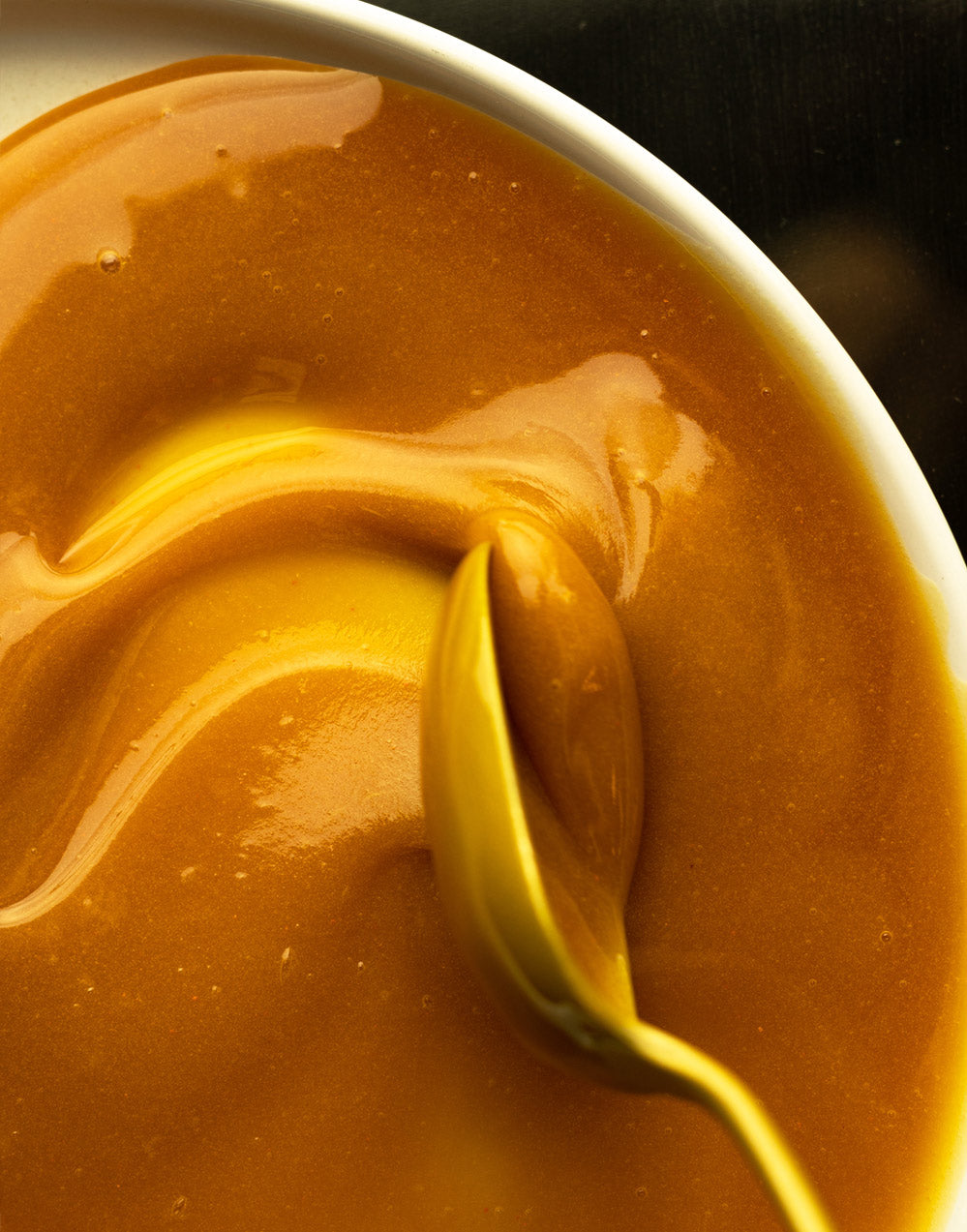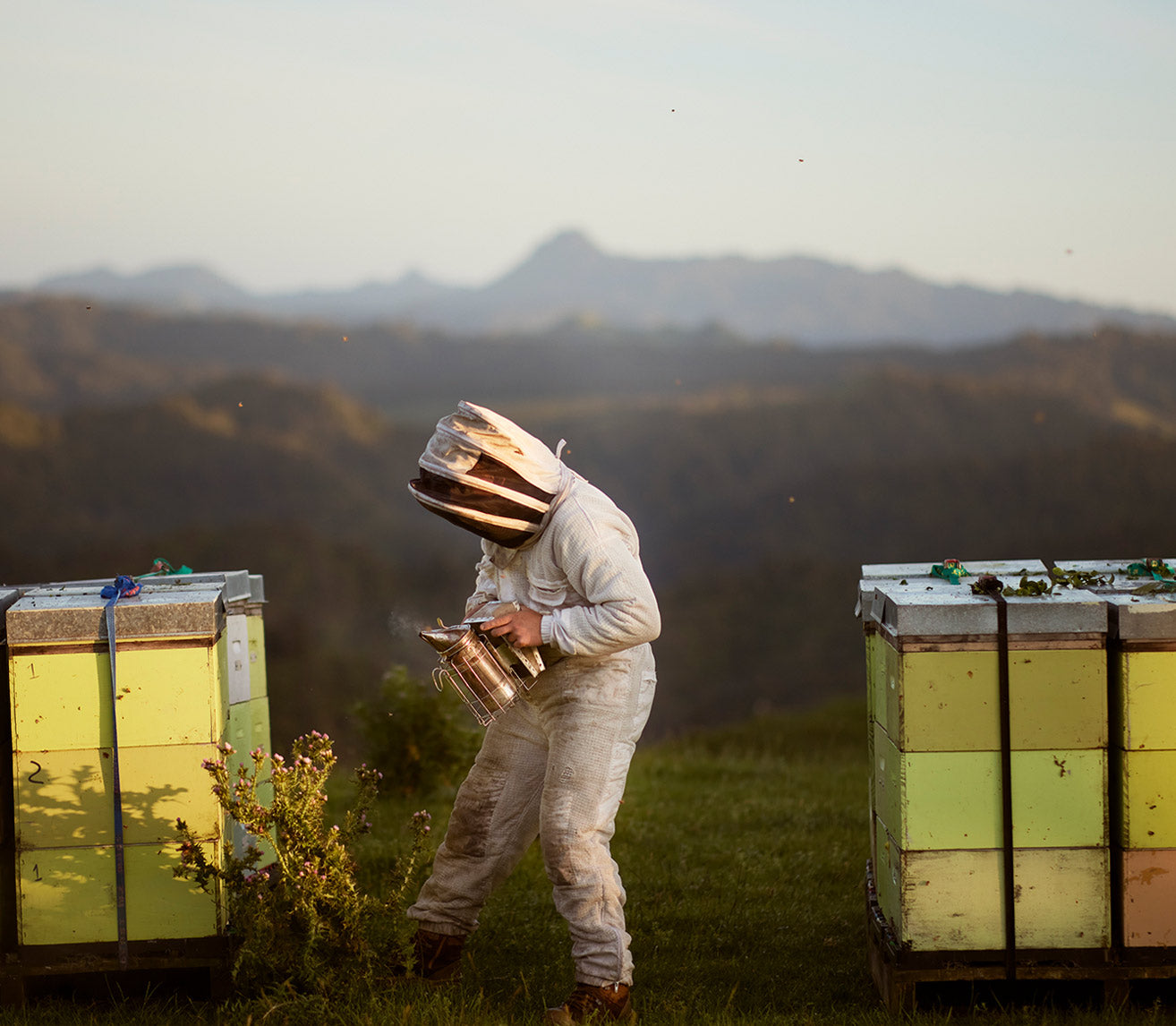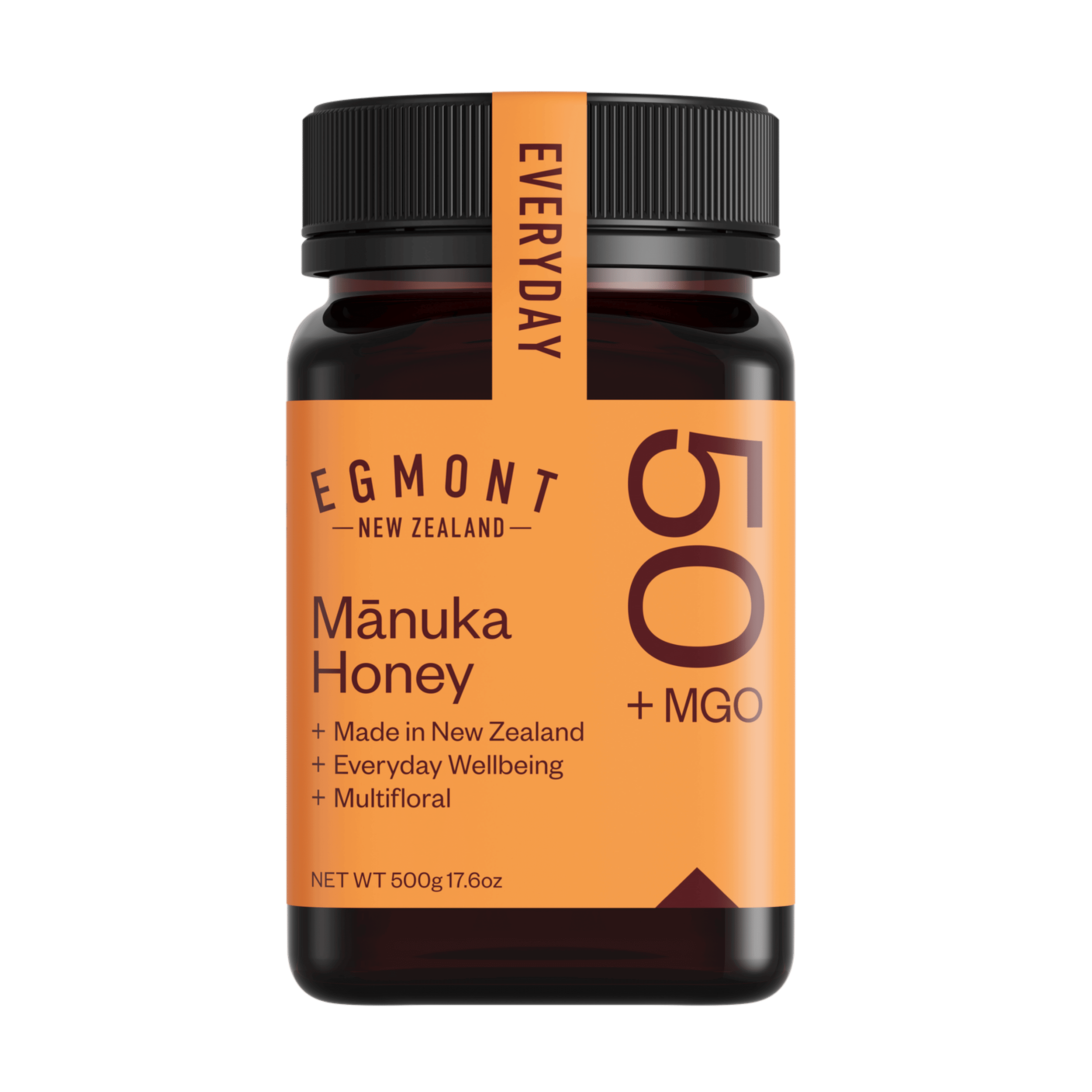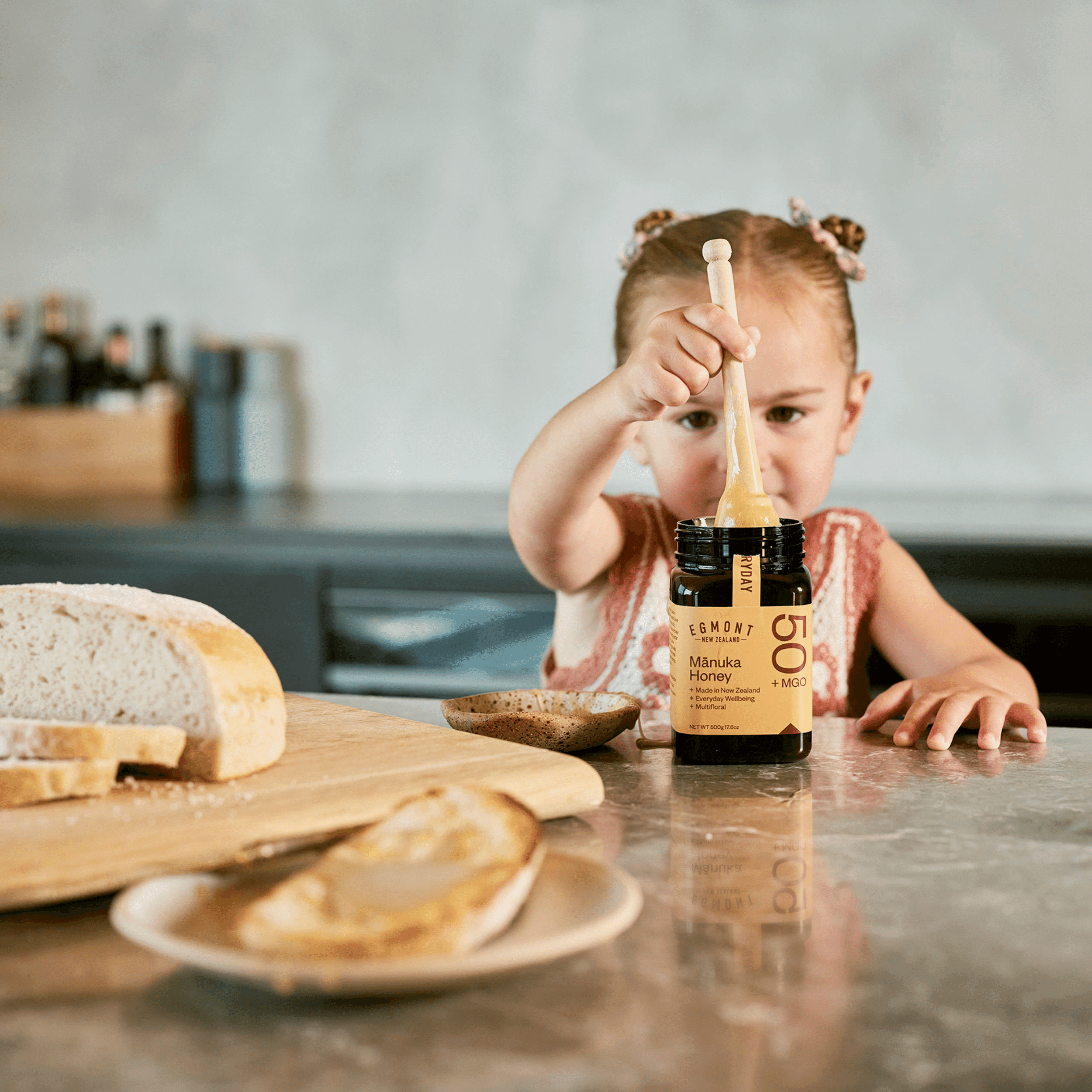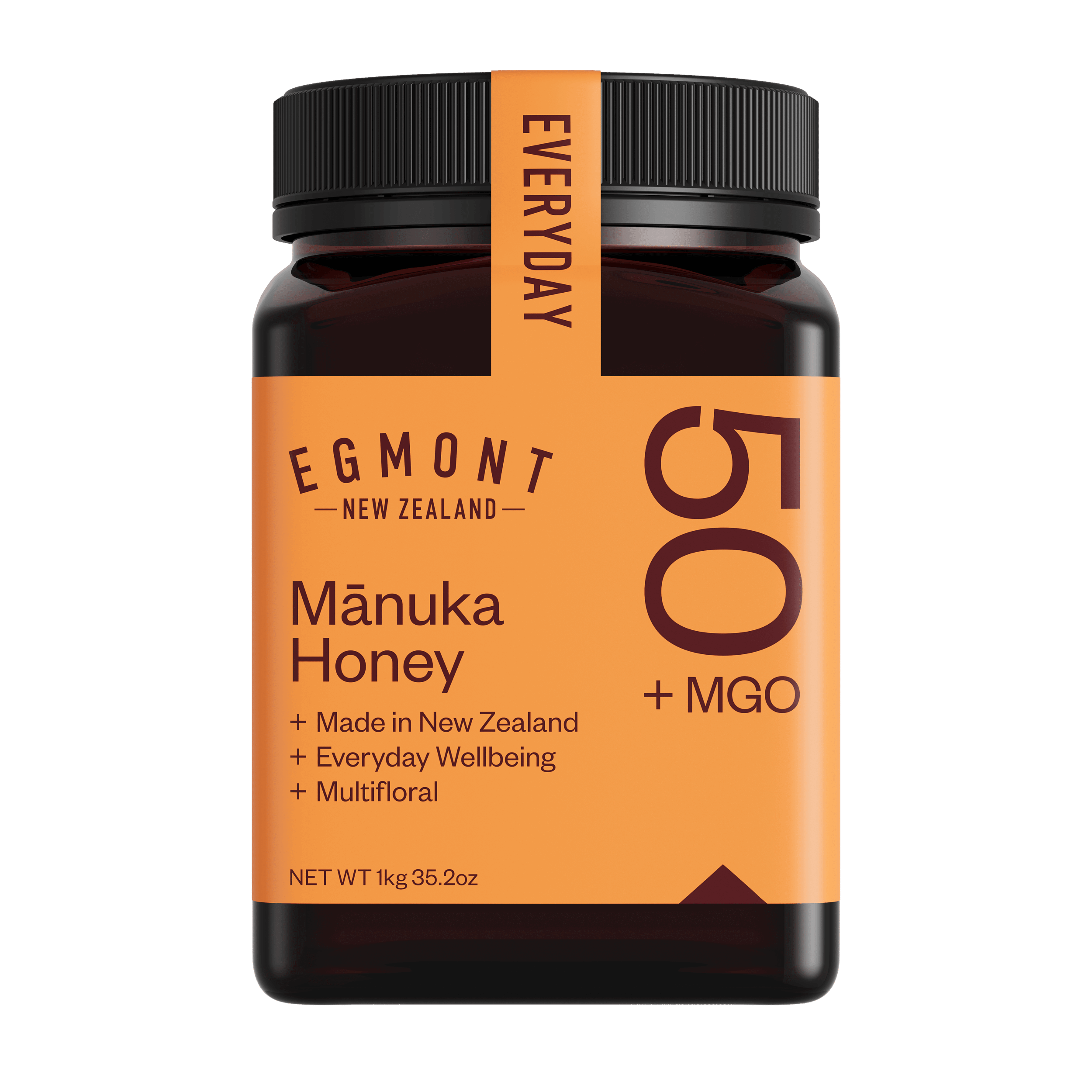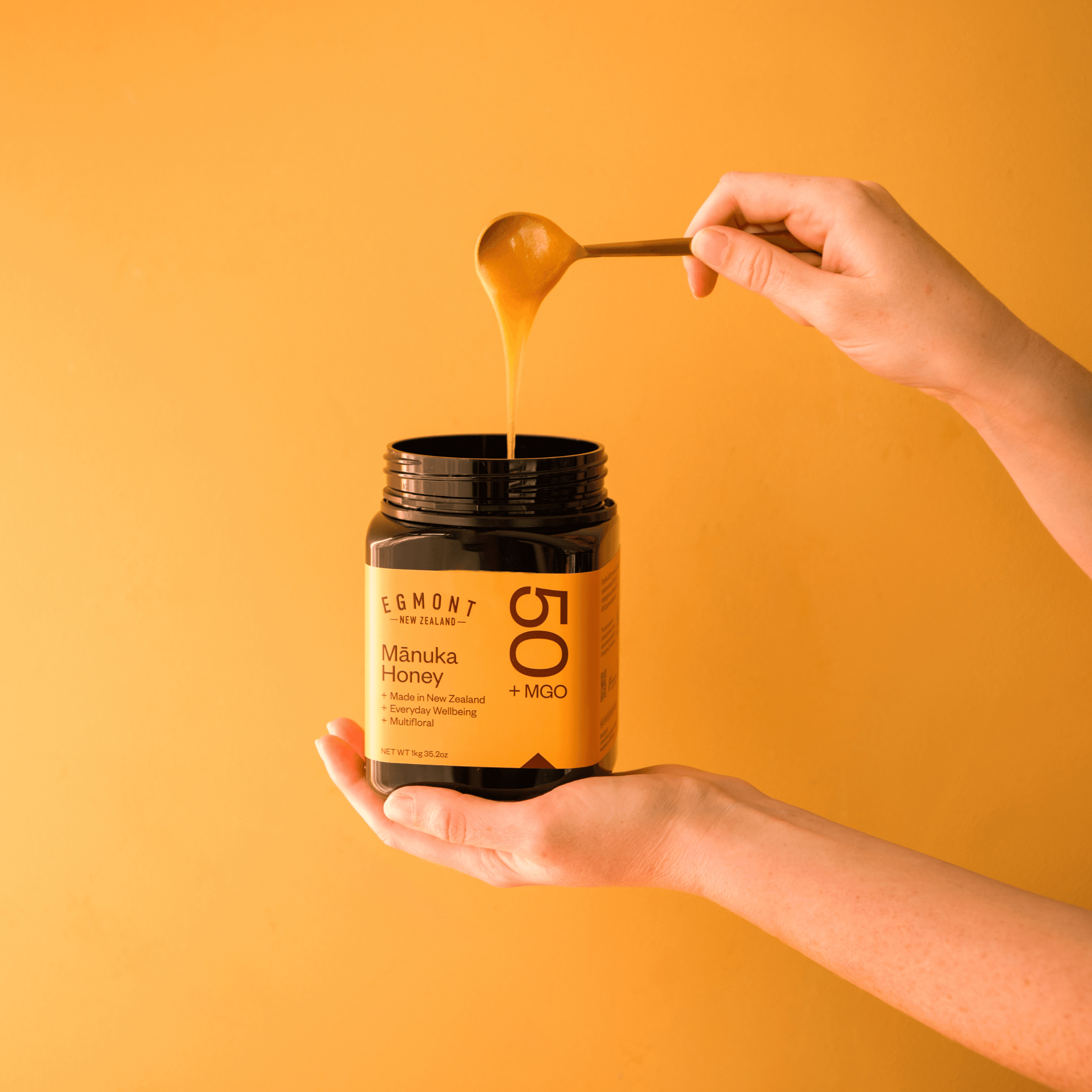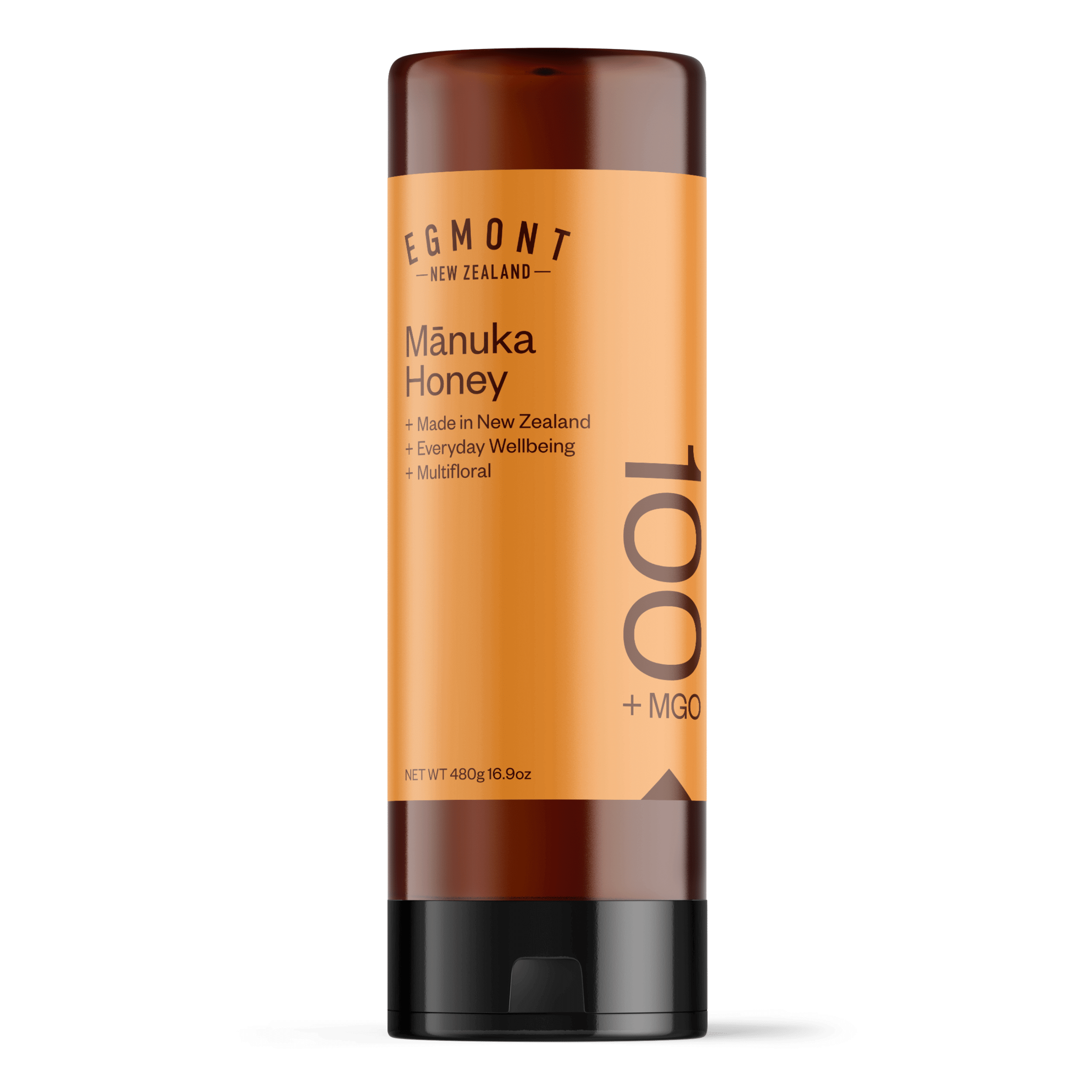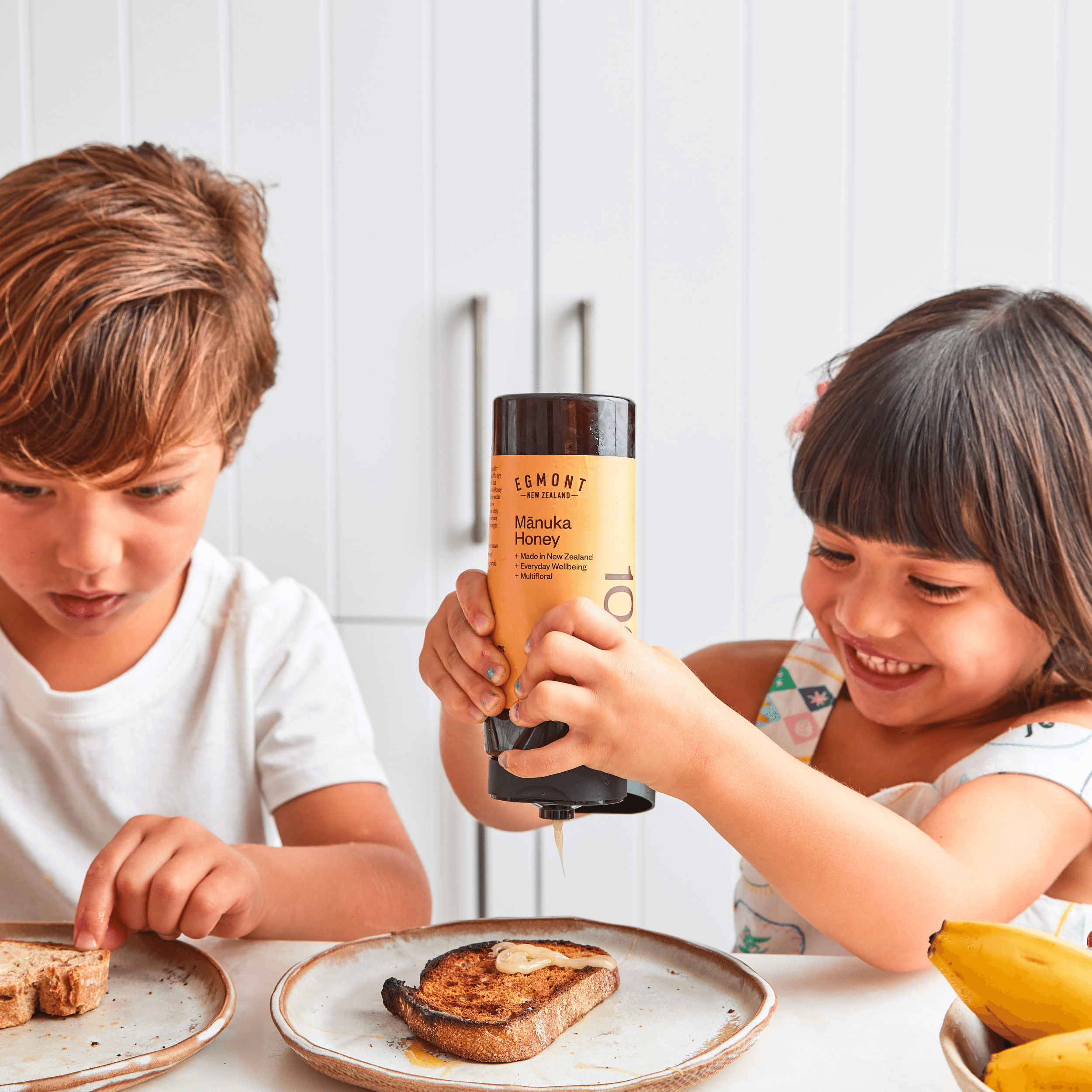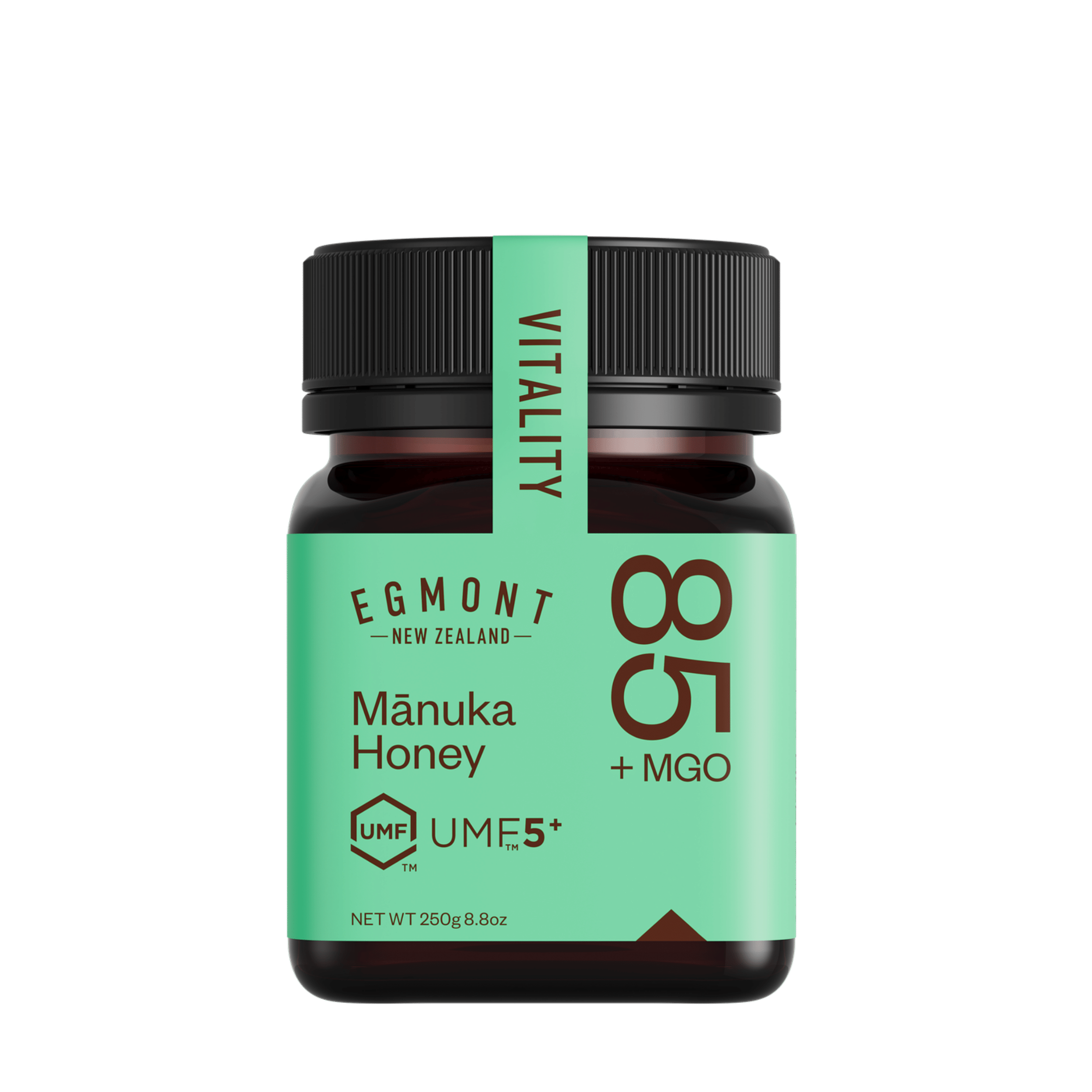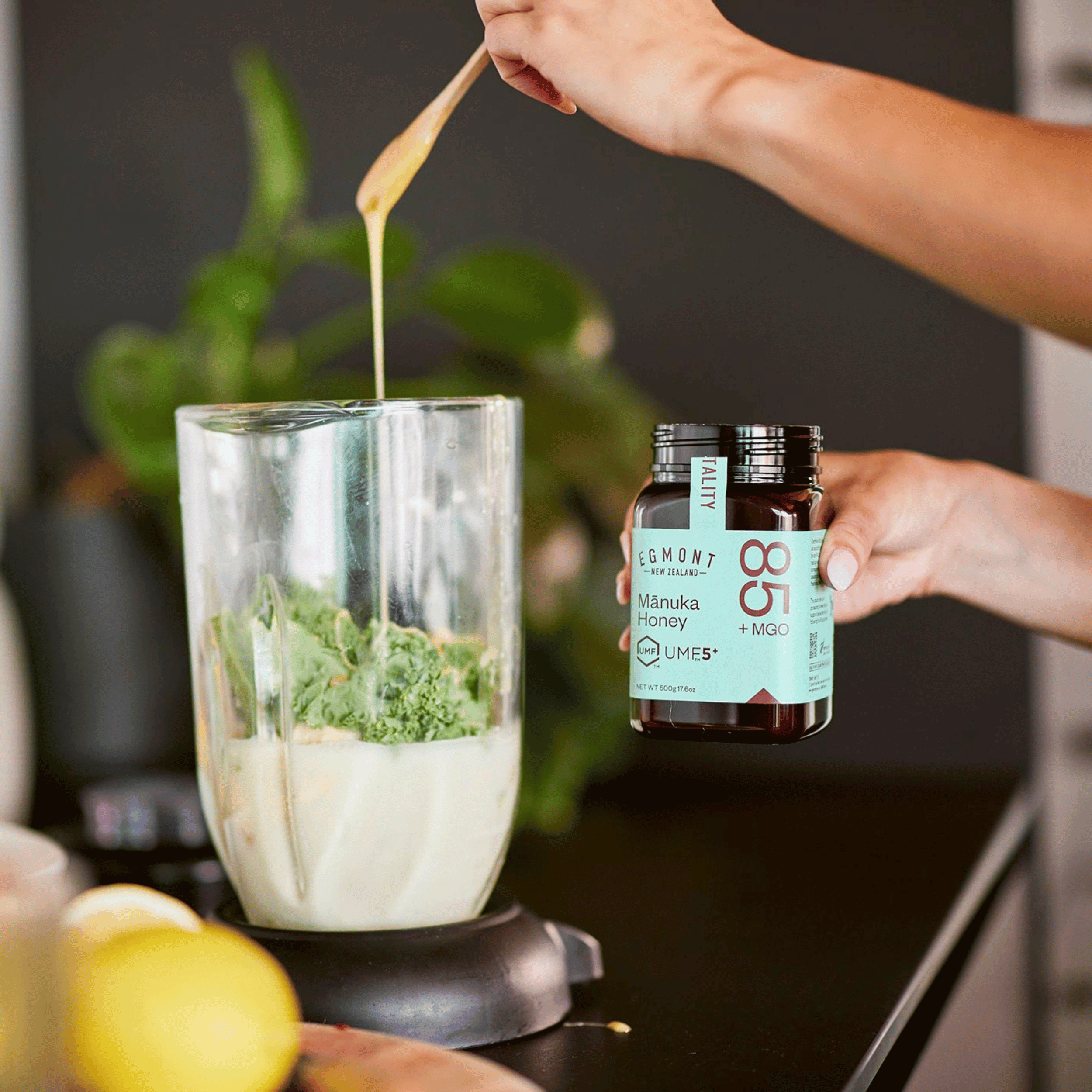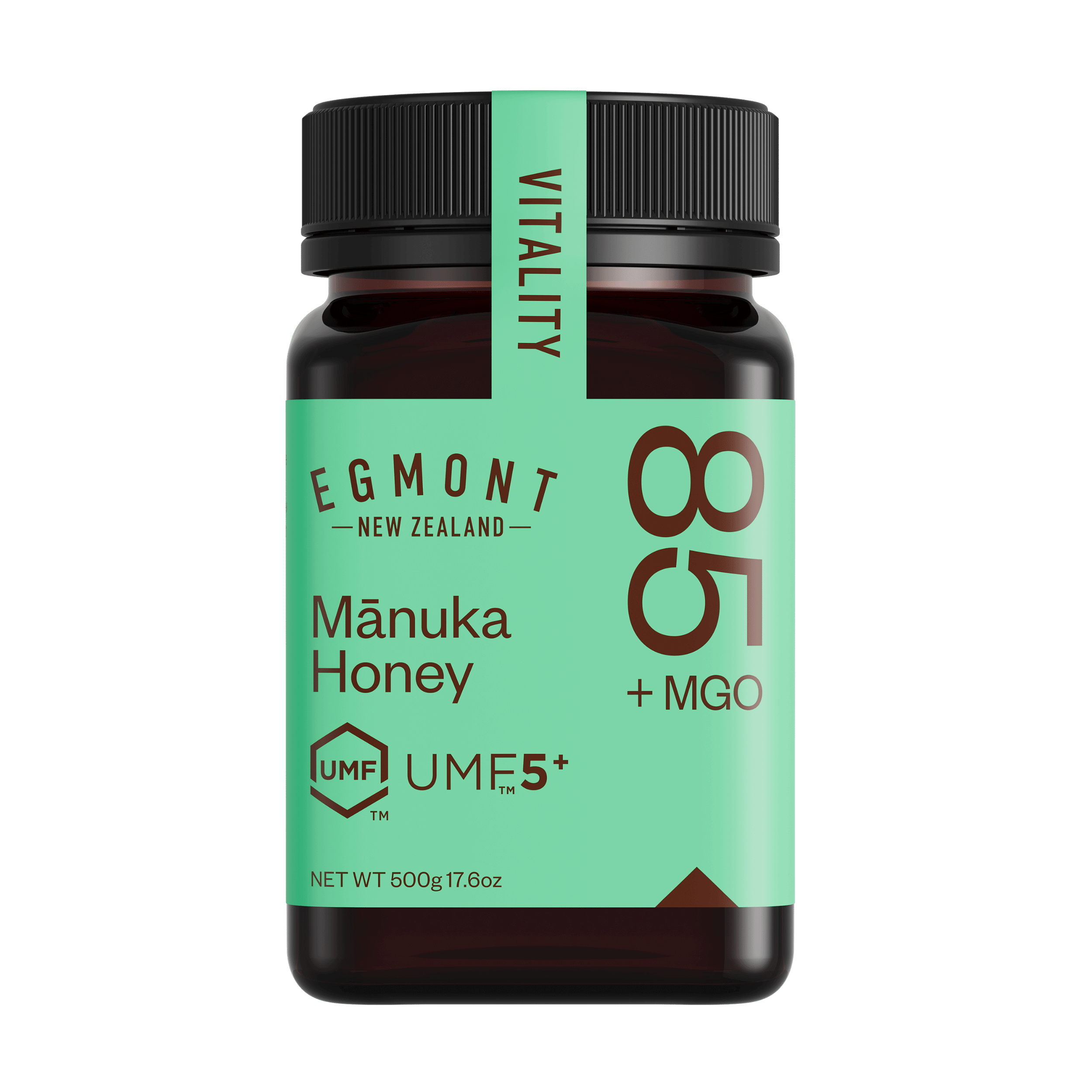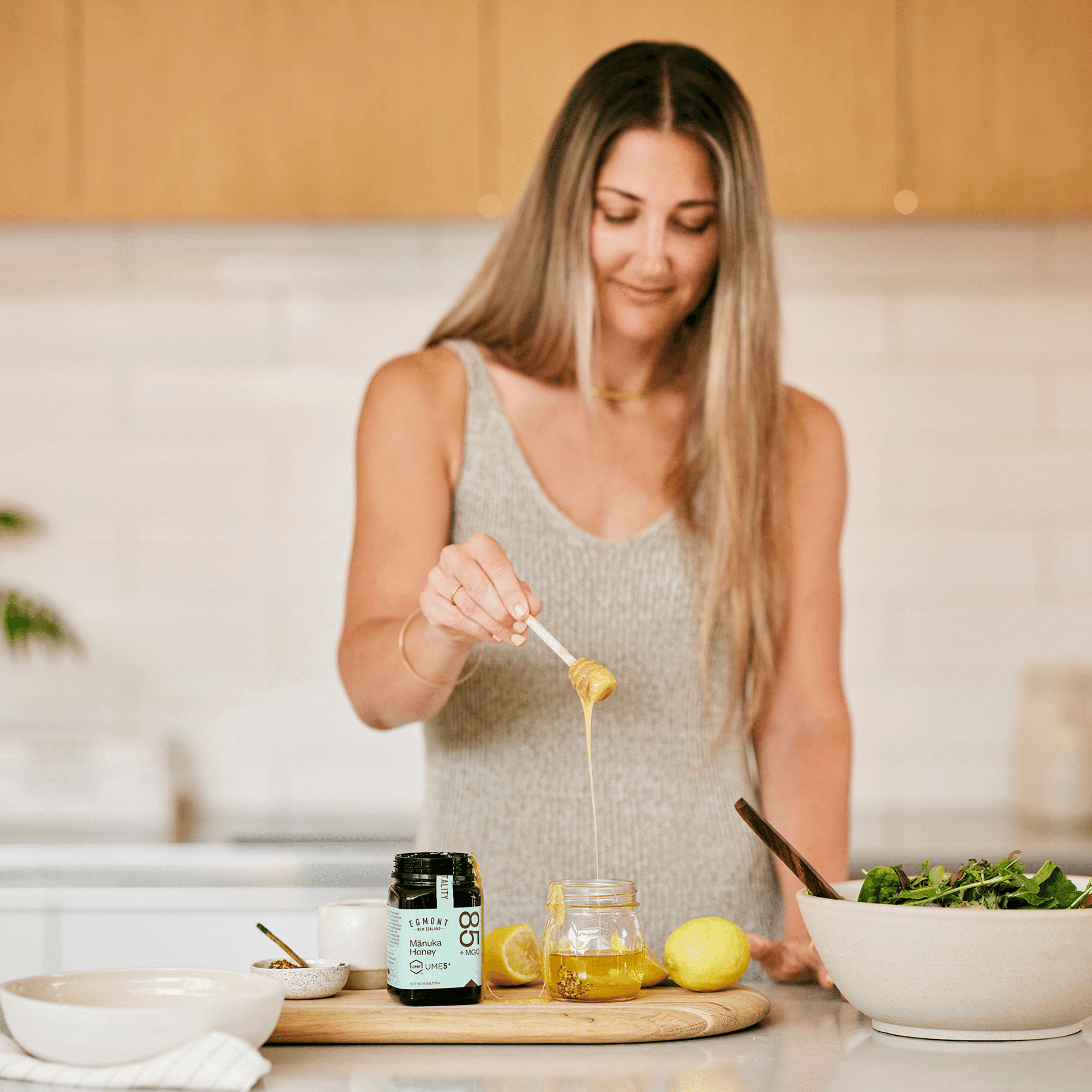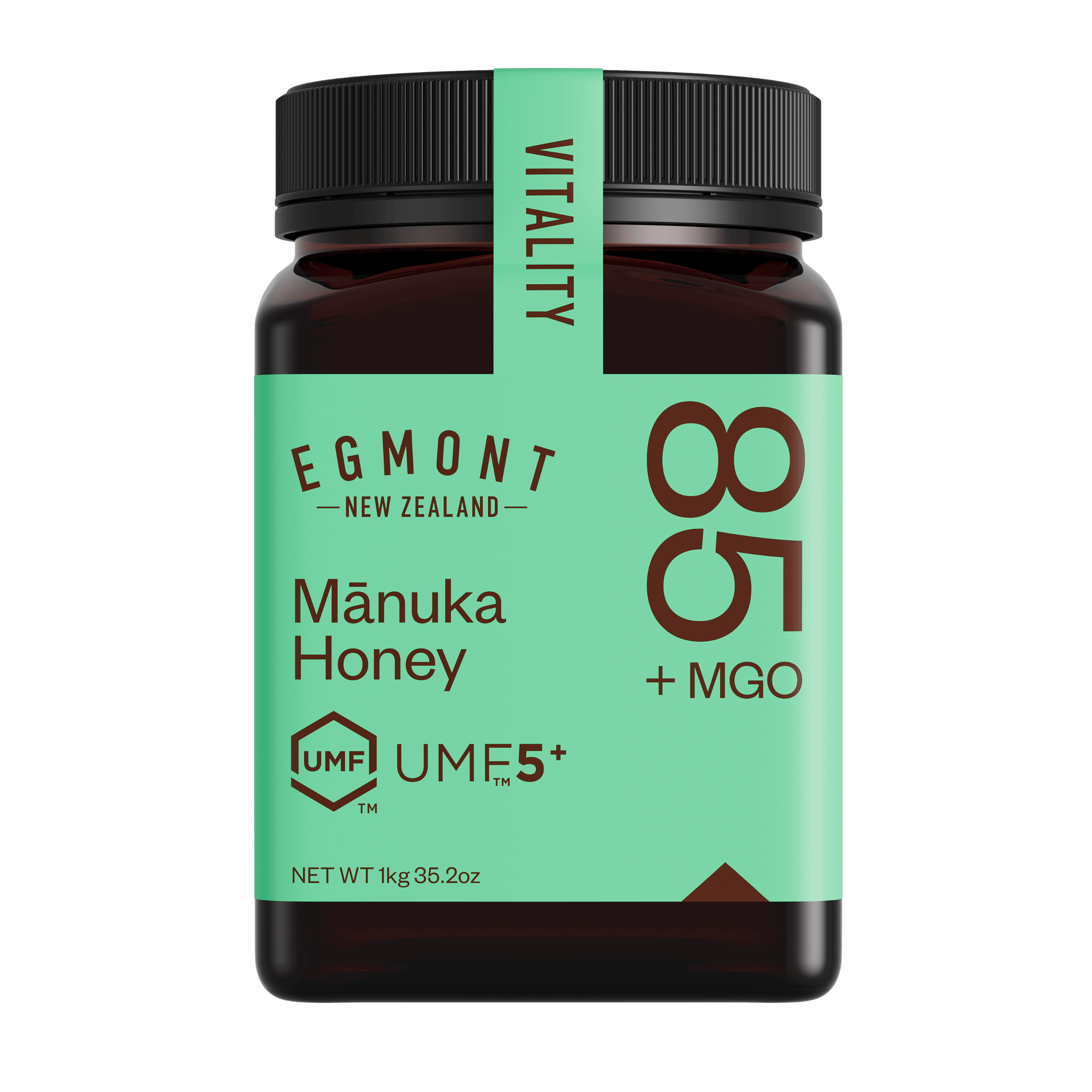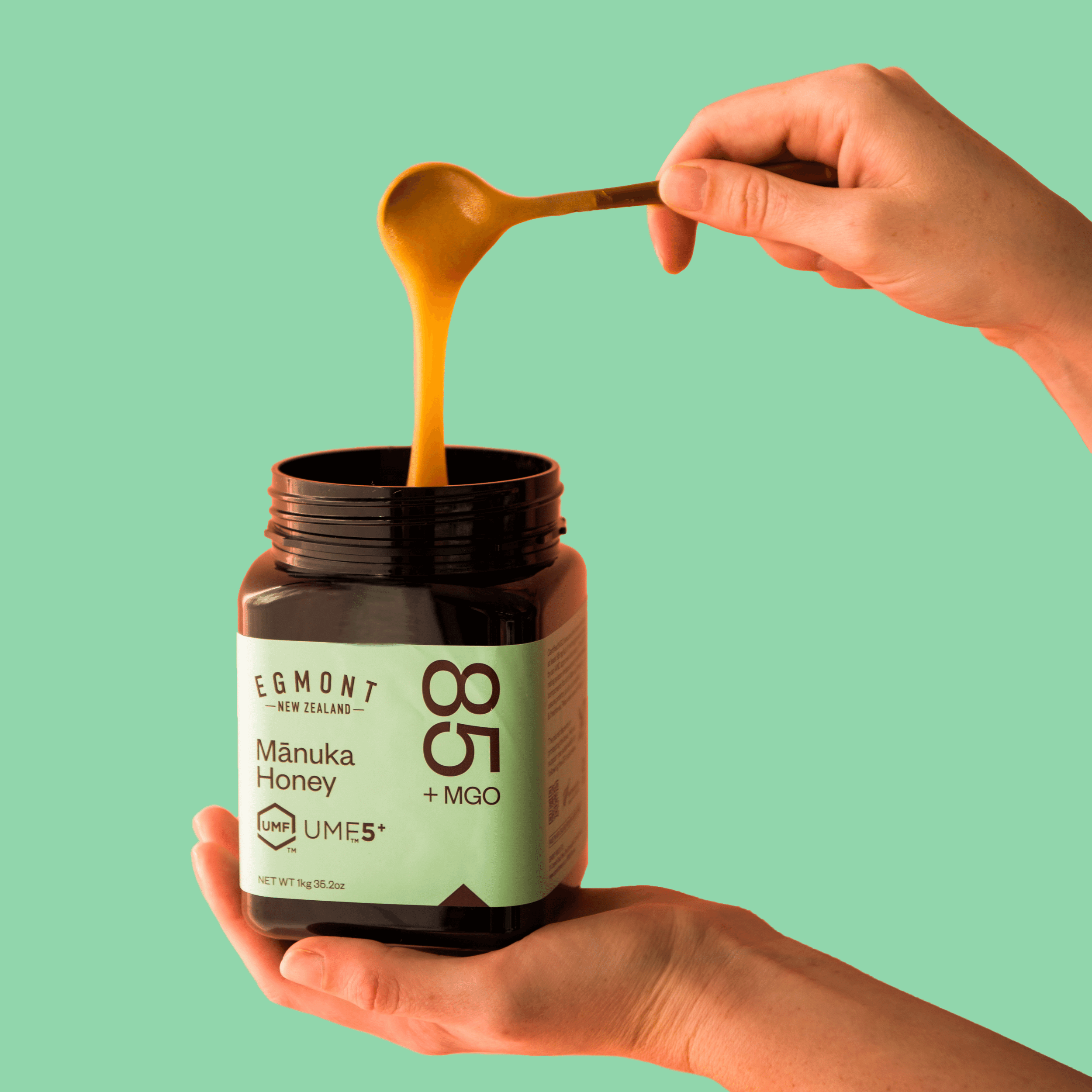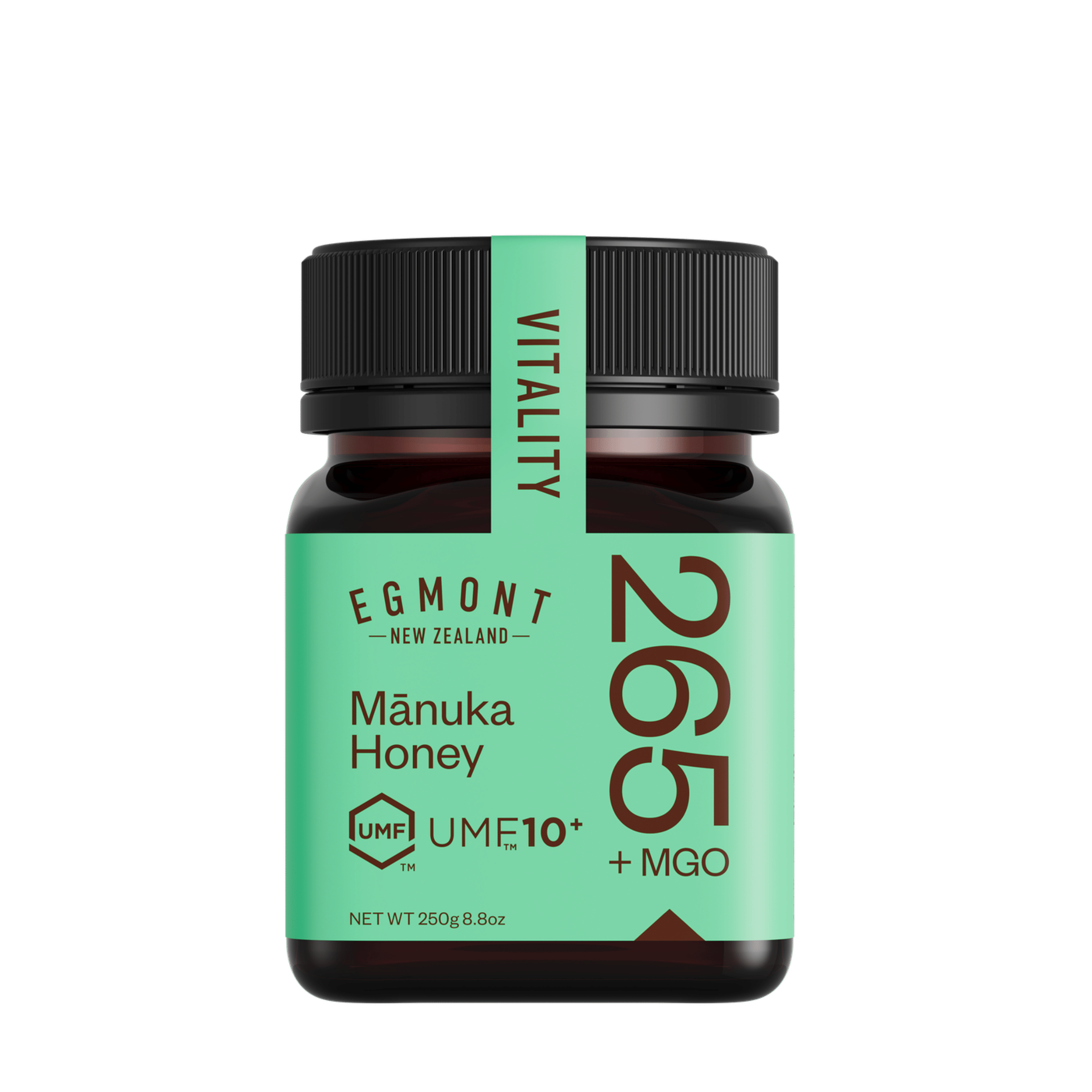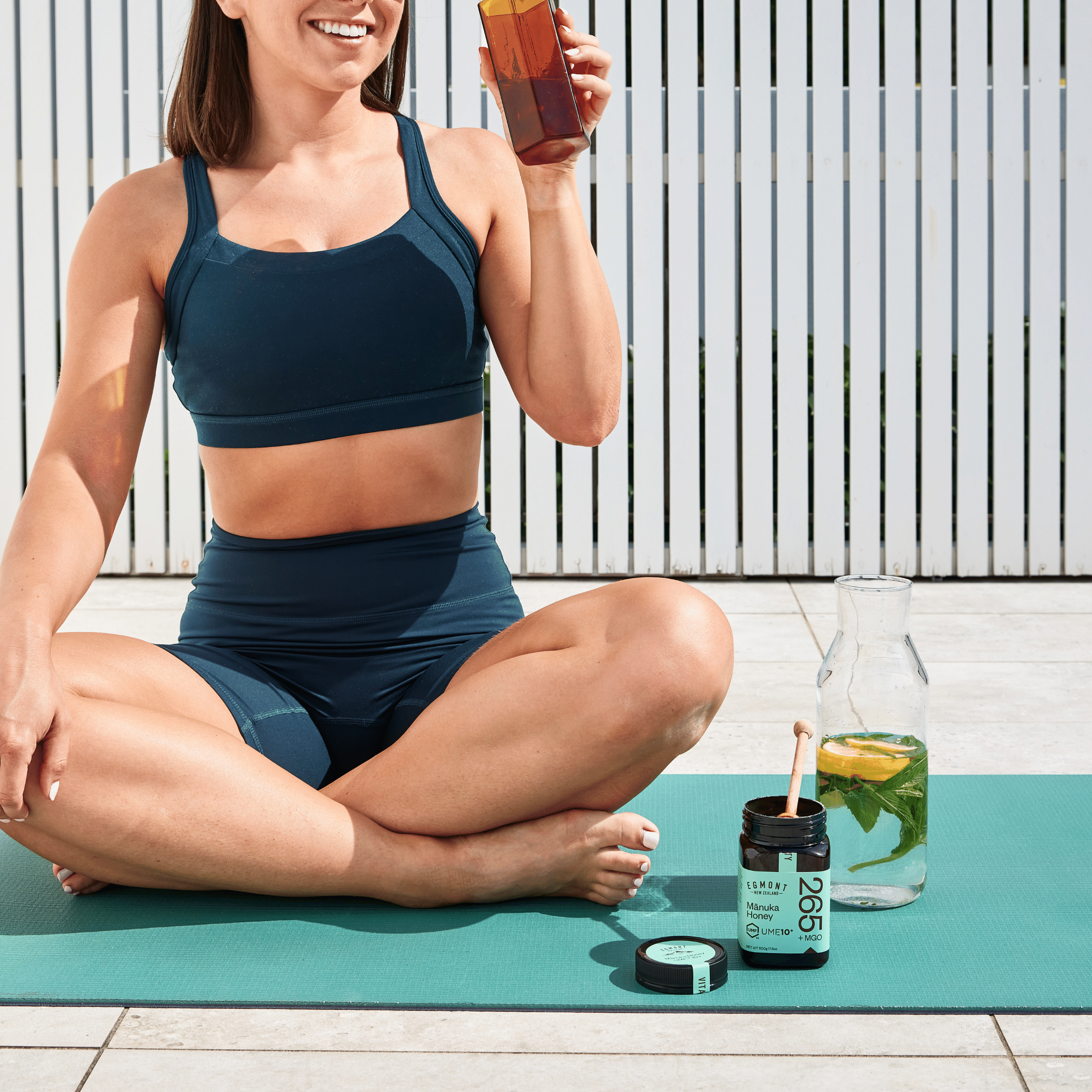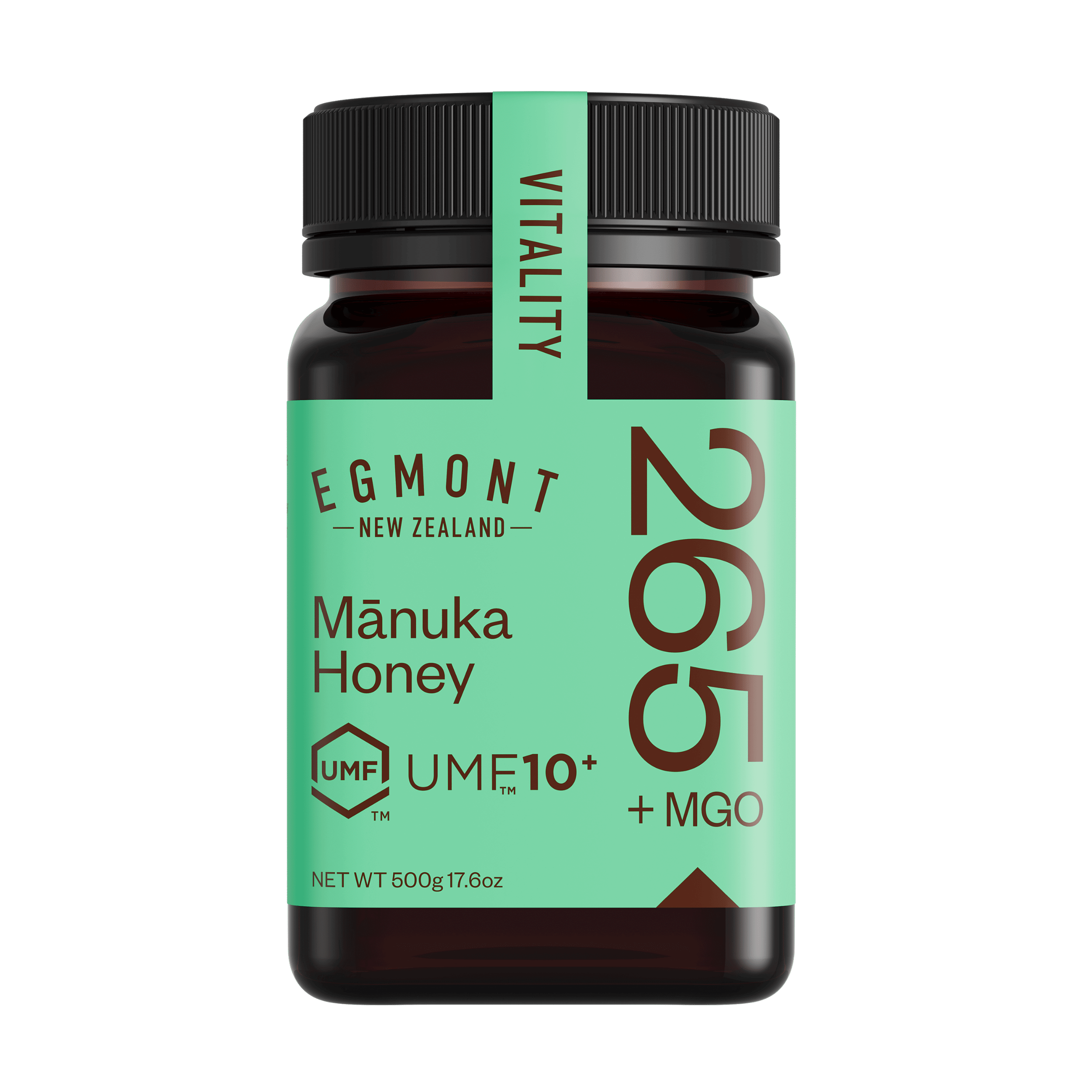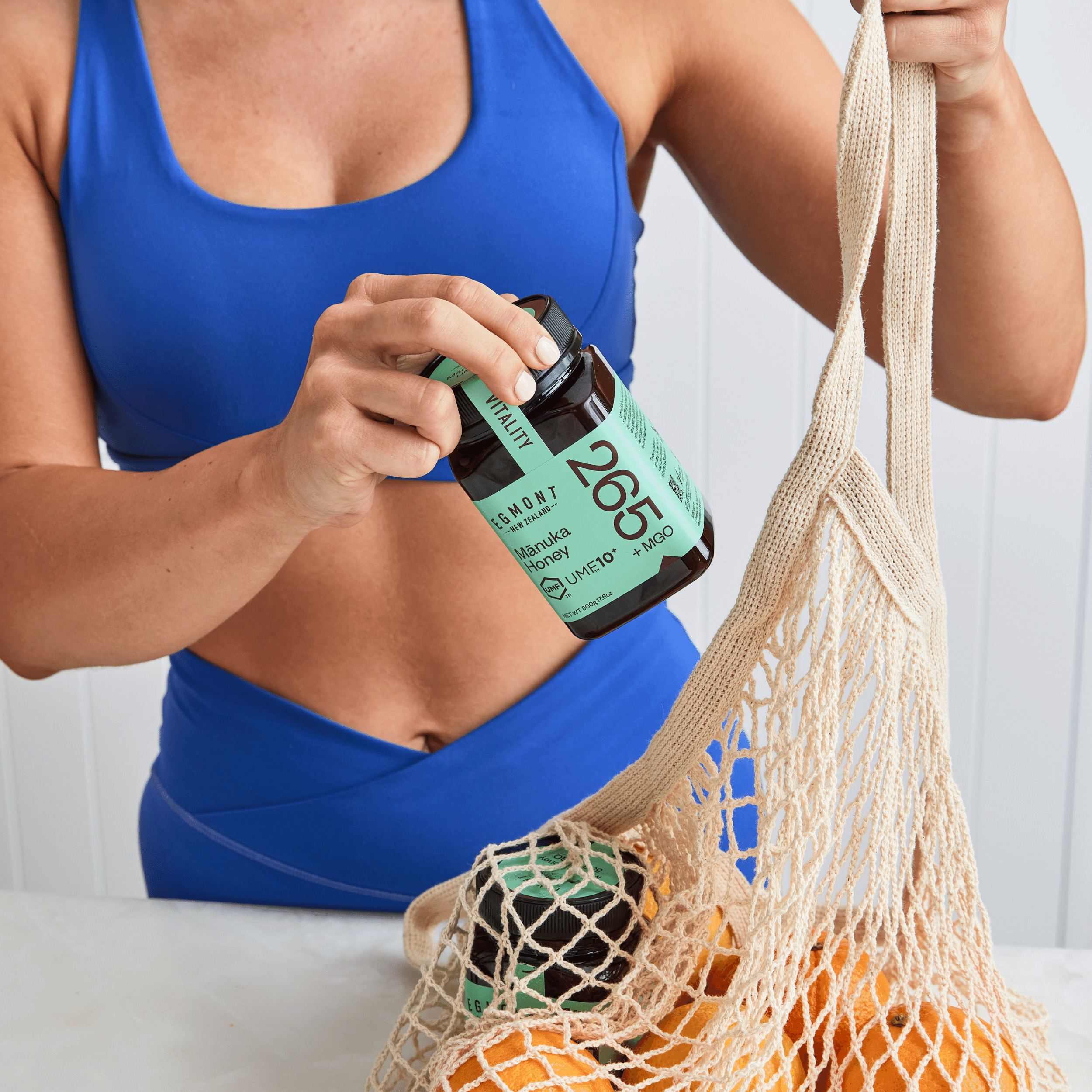How is NZ Mānuka Honey made?
Mānuka Honey is produced from the nectar of the native Mānuka tree (Leptospermum scoparium). This tree only flowers for six weeks of the year in New Zealand, so it’s a busy period for our beekeepers.
On our sprawling, remote farm in South Taranaki, we have dense pockets of Mānuka trees that our bees flock to. Bees will only fly a few kilometres from their hive to gather nectar, so we nestle their hives deep in these groves of Mānuka. This means we can produce potent Mānuka Honey.
Worker bees suck nectar through their inquisitive, probing tongue (named the ‘proboscis’) from nearby flowering Mānuka trees and store it in their ‘honey pouch’. While most of this is brought dutifully back to the hive, it also serves as a quick energy boost if the worker bee has a long and strenuous flight home!
Once back at the hive, the nectar is passed onto the house bees, who digest the nectar for around half an hour. During this process, a chemical reaction occurs which converts the sucrose in the nectar into both glucose and fructose.
The bees then ferry the honey into a honeycomb cell, and carefully fan it with their wings to dry it out - otherwise, an excess of moisture will ferment and spoil all their hard work.
Once the honey is just right, the bees seal the honeycomb with a thin layer of wax to preserve it for future food stores. But don’t worry - bees typically produce more honey than they need, and our ethical beekeeping practices ensure that our bees are always left with enough sustenance (especially during winter when we want them to stay healthy and warm!)
The bees truly do all the hard work for us. Once the beekeepers harvest the honey, it makes the road trip to our factory in Bell Block, New Plymouth.
The honey is poured through a filter so that no foreign bodies, like tree bark, end up in your jar of Mānuka Honey. It’s then gently churned to achieve that silky, creamy texture that we all know and love.
After that, it goes straight in the jar! The end product has no added chemicals or preservatives, and is nothing but 100% pure honey.
What does ‘UMF’ and ‘MGO’ mean?
Historically, producing Mānuka Honey was largely left to nature and there was no testing available to verify each batch’s authenticity.
In the late 1990’s, the Unique Manuka Factor (UMF) quality trademark was established by what is now known as The UMF Honey Association. This quality assurance system involves independent laboratory testing based on four factors:
- Authenticity
- Freshness
- Purity
- Potency
Firstly, the honey is tested for Leptosperin, which is a compound found exclusively in Mānuka flower nectar. This confirms the authenticity of your Mānuka Honey.
Next, the honey is tested for a range of chemicals including hydroxymethylfurfural (HMF). This indicates the duration and temperature of storage.
Dihydroxyacetone (DHA) levels indicate shelf life; so the higher the DHA content, the longer the shelf life of your Mānuka Honey.
And what’s all the fuss about MGO? Methylglyoxal is the superstar compound that gives Mānuka Honey its antibacterial properties. The higher the MGO level, the more potent your Mānuka Honey is.
Egmont Honey is a certified member of The UMF Honey Association, so any of our Mānuka Honey jars with a UMF badge is tested and verified by a UMFHA approved laboratory before going to market. This means you can rest assured that you’re purchasing 100% pure and authentic Mānuka Honey from us.
Which Mānuka Honey should I buy?
We have different ranges of Mānuka Honey that can help with each part of your wellness routine.
Multifloral Mānuka Honey (MGO 50+, MGO 100+)
For everyday wellbeing, we recommend an ‘entry level’ Mānuka Honey with MGO levels starting at 50+.
This is a multifloral honey, which means the Mānuka nectar is blended with other wildflower nectars (think Pohutukawa, Rewarewa, Kāmahi, Rata etc) to create a creamy, indulgent honey.
Our multifloral MGO 50+ and MGO 100+ Mānuka Honey has a rich, caramel flavour and is a healthy alternative to refined sugar. You can use it in both sweet and savoury culinary dishes, drizzle it over your breakfast or smoothie, or add a dollop to make your favourite hot beverage that bit more indulgent.
Incorporating a multifloral Mānuka Honey into your everyday diet allows you to enjoy the beneficial properties of MGO, while also making the health conscious decision to stay away from refined sugars!
UMF 5+ to UMF 15+ Monofloral Mānuka Honey
Our UMF badge means the honey is pure Mānuka Honey, with no other floral sources added in. This is why it’s called monofloral Mānuka Honey; it's 100% authentic with nothing to hide, nothing but nature.
While you can certainly add its earthy, treacly flavours to your cooking, we suggest enjoying our UMF honey straight off the spoon or as a healthy cereal topping for a daily boost of vitality.
With higher levels of MGO and therefore antibacterial activity, it’s also most popular added to teas, tonics or elixirs; The Ministry of Health even recommends mixing honey into a warm drink to ease the discomfort of a sore throat or cough.
UMF 20+ to UMF 25+ Monofloral Mānuka Honey
With MGO levels now climbing over 800, the high levels of antibacterial activity means that ‘less is more’ when it comes to our high UMF Mānuka Honey. Simply enjoy the bittersweet, dark toffee tasting notes of this high-grade Mānuka Honey straight off the spoon. Our team enjoys taking one teaspoon in the morning and one at night.
The high concentration of MGO (which contains antibacterial properties) in the Mānuka Honey also lends itself to skincare applications. We mix a spoonful of our UMF 20+ with half a teaspoon of turmeric, 2 tbsp of coffee grounds and a squeeze of lemon juice for a nourishing, all natural face mask!
This potent superfood belongs on the top shelf next to your other health supplements, or with the luxury skincare products in your bathroom cabinet.
Best ways to use Mānuka Honey
Our varying grades of Mānuka Honey makes it easy to incorporate this superfood into every part of your wellness routine, from morning to night. Starting with a drizzle over your favourite cereal and finishing with a dollop in your favourite cup of tea at night, there’s a myriad of ways that you can use Mānuka Honey.
Check out our recipes to inspire your next healthy, nourishing meal. We also have a handy sugar conversion table if you’re keen to use a natural sweetener instead - simply bookmark the tab and refer back to it next time you’re cooking up a storm.
We’d also love to know how creative you’re getting with your own jar of Egmont Mānuka Honey, so make sure to tag us on social media with your own ideas and recipes!
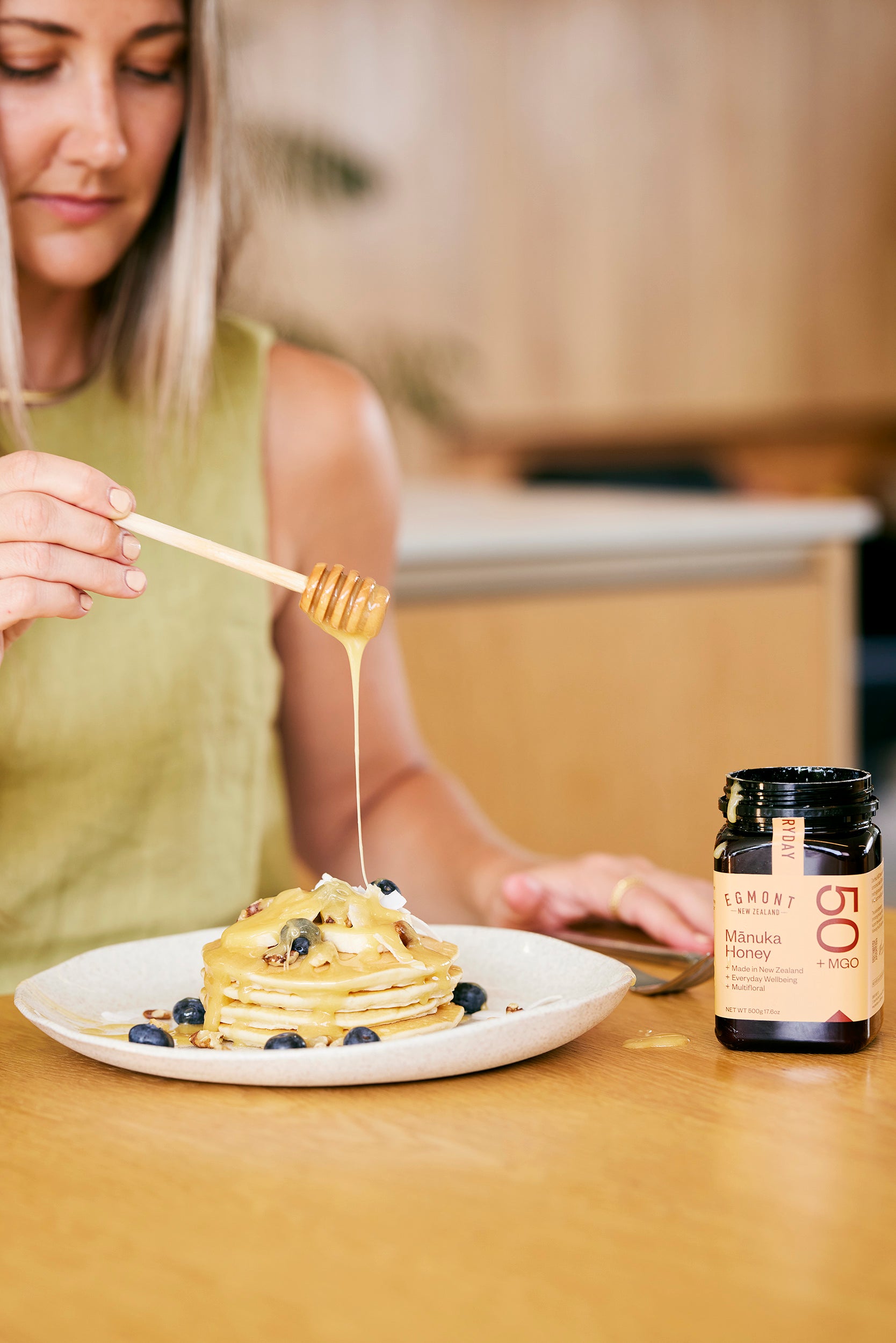
Use Mānuka Honey as a natural sweetener
With indulgent caramel undertones, our Multifloral Mānuka Honey is perfect for both cooking and baking.
View our recipes for inspiration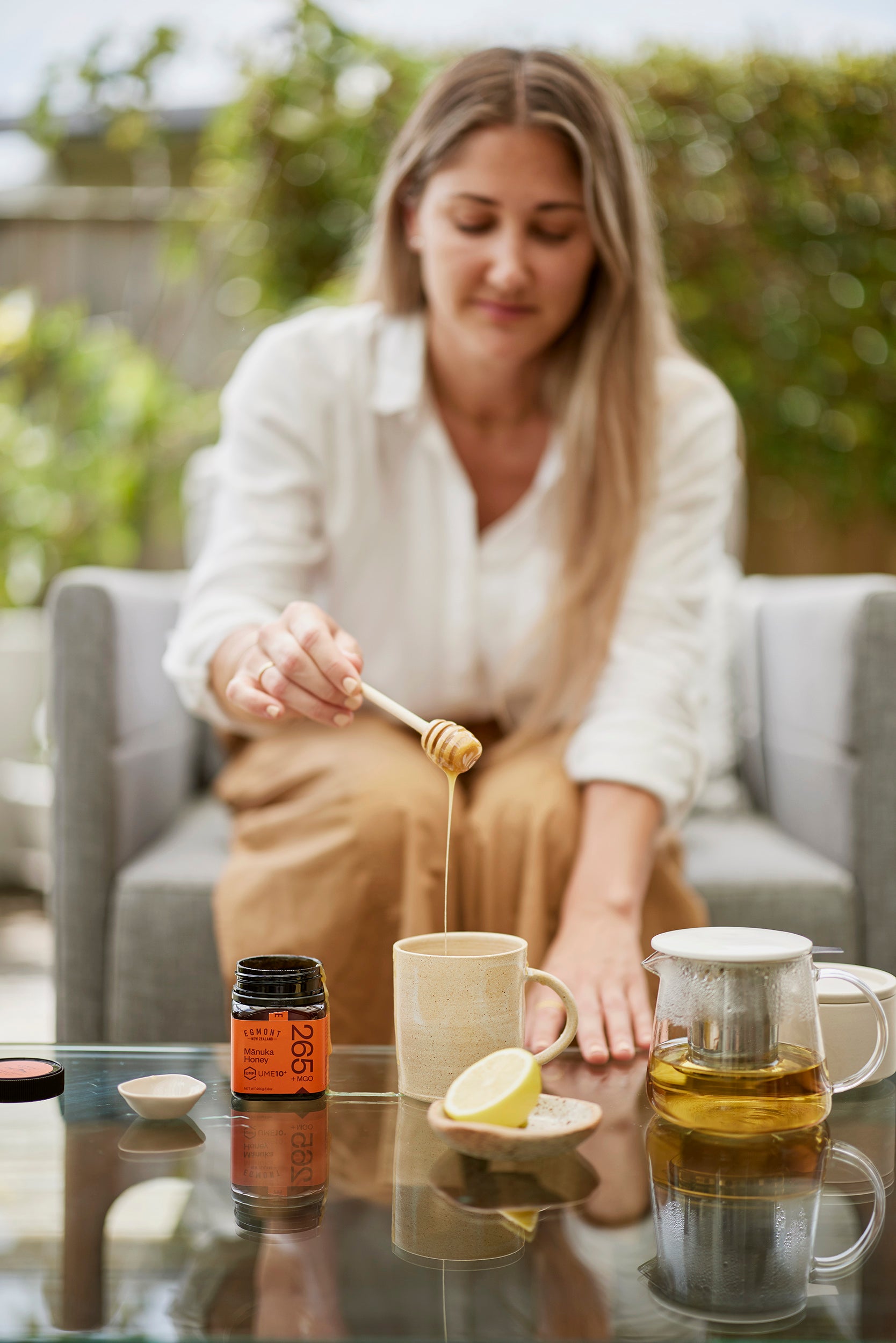
Mix Mānuka Honey into a warming drink
Egmont Mānuka Honey can be mixed with warm water and lemon to create a soothing tonic.
Shop our Mānuka Honey range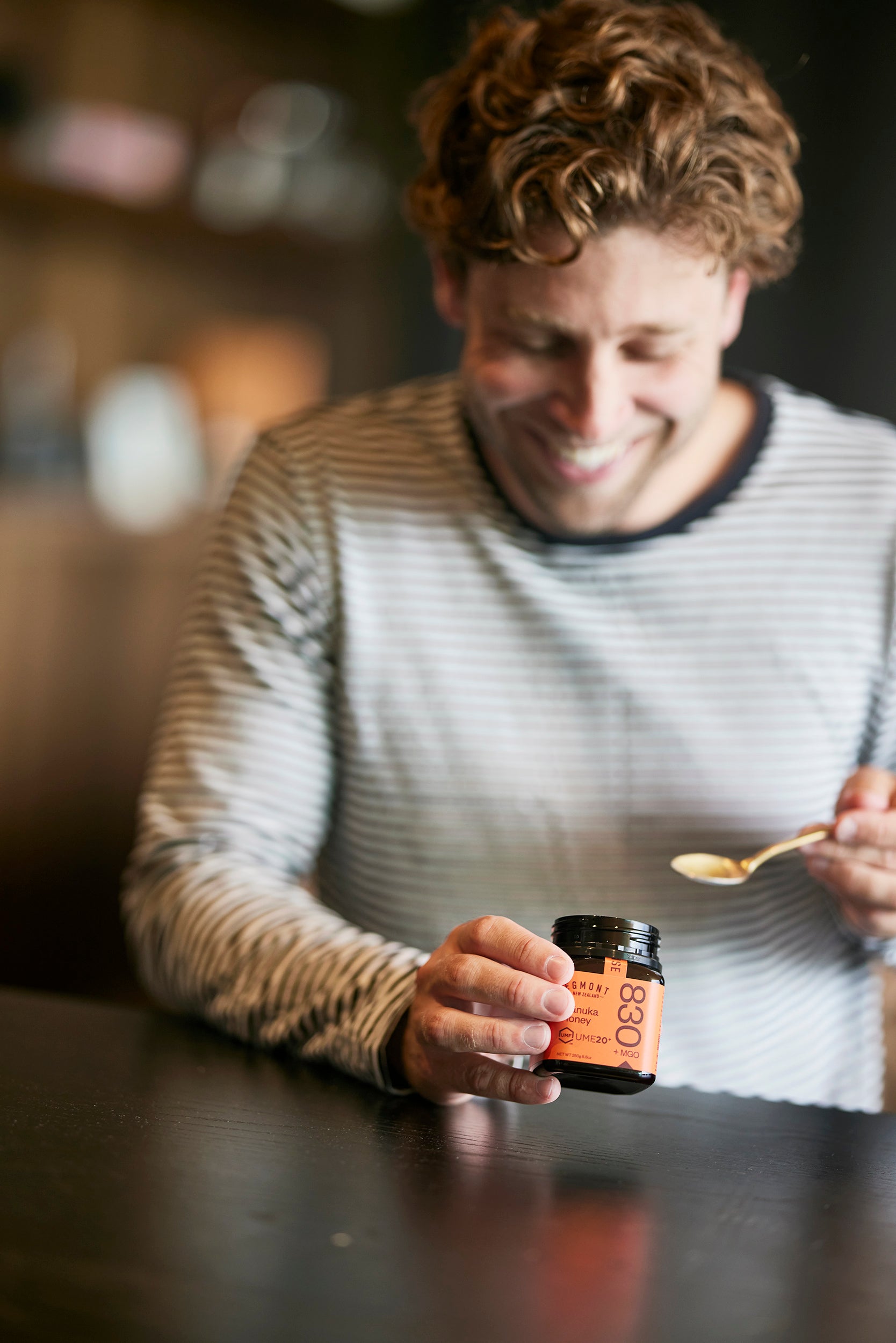
EAT MĀNUKA HONEY STRAIGHT FROM THE SPOON
The potency of your Manuka honey will depend on the MGO rating – the higher the rating, the stronger your Manuka Honey will be. During periods of unwell, you can enjoy straight from the spoon.
Shop our Intense Support Range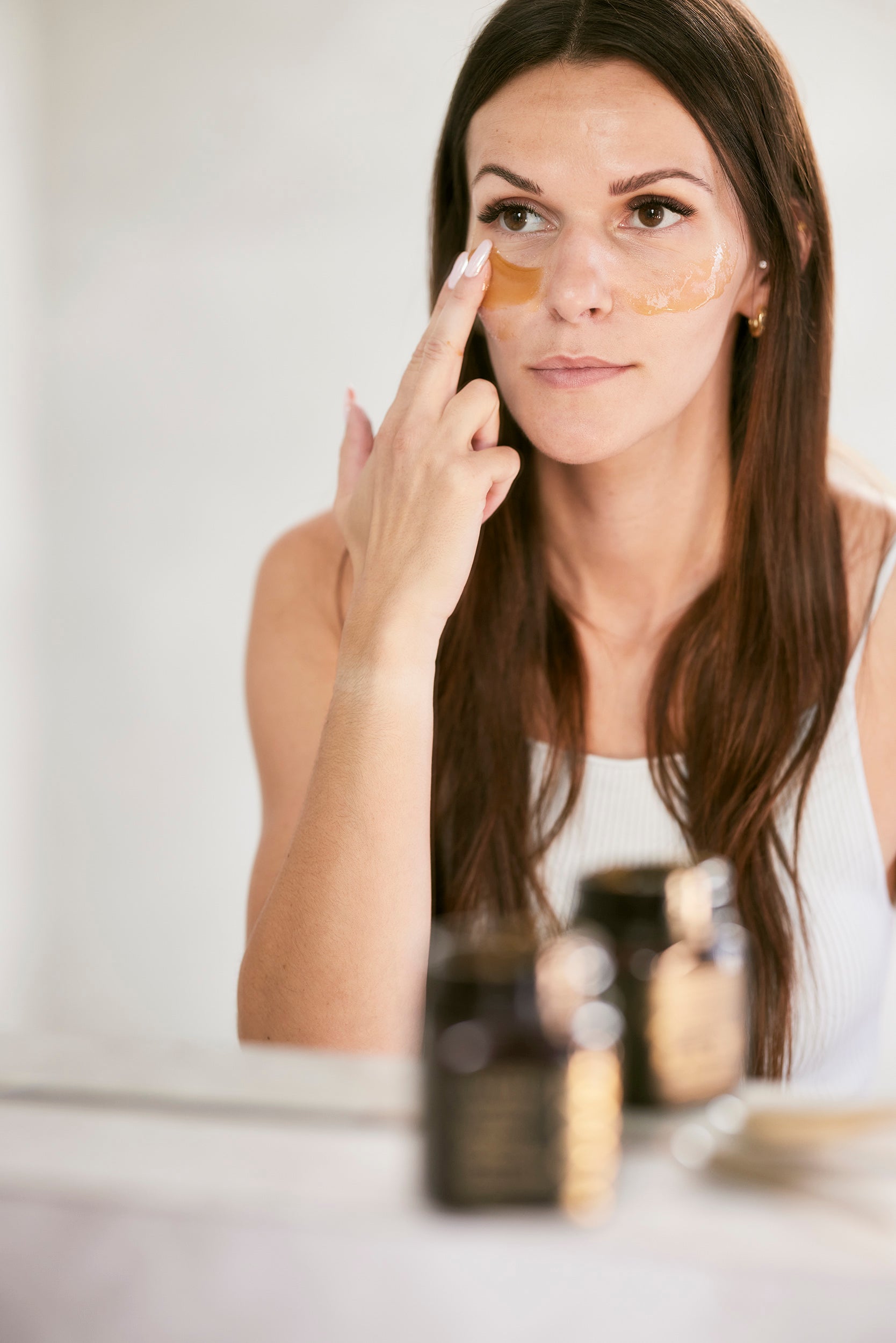
Smear Mānuka Honey onto your skin
Mānuka Honey is used to keep skin moisturised and glowing. If using on your skin simply spread as an even layer across your face for a DIY facemask, or on targeted areas.
Shop our Mānuka Honey rangeShop Mānuka Honey
Introducing our premium collection of authentic, UMF™certified New Zealand Mānuka Honey, ethically sourced from the remote native forests of New Zealand.



